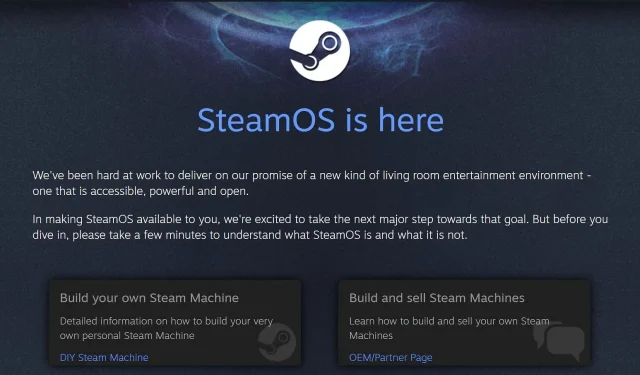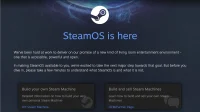Initially launched in 2013 alongside Valve’s Steam Machines, SteamOS saw minimal traction, which led to a stagnation in its development. Although it continued to receive essential security and bug fixes, significant updates were sparse as Valve diverted focus to other priorities. The landscape shifted dramatically with the introduction of the Steam Deck in 2022, a handheld gaming device equipped with a revamped version of SteamOS, reigniting interest and demand for the operating system.
Both the Steam Deck and the new iteration of SteamOS garnered acclaim from users, creating anticipation for its availability on non-Steam Deck devices such as PCs, laptops, and alternative handhelds. Valve has since rolled out a preview version of SteamOS, hinting at upcoming support for non-Steam Deck platforms, much to the excitement of gaming enthusiasts.
This focus on SteamOS, built primarily for gaming, raises intriguing questions about its potential impact on Windows, currently the dominant operating system worldwide. This article delves into the latest SteamOS Preview, exploring its implications for gaming and the broader software landscape.
Exploring the Latest SteamOS Preview

The original SteamOS received only minor adjustments since its 2013 launch, focusing primarily on security enhancements and bug fixes using a Debian Linux foundation. The situation improved dramatically with the deployment of SteamOS 3 alongside the Steam Deck, which introduced a plethora of new features and optimizations.
SteamOS 3 is built on Arch Linux, which employs a rolling release model that facilitates an efficient and streamlined update process. This gaming-centric operating system prioritizes superior performance, featuring a user interface that emphasizes gaming from the moment the device boots, akin to the Big Picture Mode in the Steam application.
For users needing to multitask, SteamOS offers the KDE Plasma 5 desktop environment, which ensures a seamless experience for browsing and productivity, albeit with gaming being the core focus. The recent preview release, SteamOS 3.7.0, enhances this experience further, based on an updated Arch Linux foundation with the latest kernel and Mesa graphics drivers. However, it is important to note that as of now, this latest version is exclusive to Steam Deck users.
Future support for non-Steam Deck devices has been hinted at by Valve, particularly with regard to the Lenovo Legion Go S, which will include compatibility with SteamOS. Other hardware owners will need to await the finalized version to enjoy the advancements.
The Potential Impact on Windows
As outlined by StatsCounter, Windows maintains a commanding lead in the operating system market, claiming a staggering 70% share among all computers globally. Notable milestones include over one billion monthly active users reported by Microsoft in 2020. Even considering the newer Windows 11, the combined user base continues to exceed one billion, emphasizing Windows’ deep-rooted presence in educational institutions, businesses, and personal environments.
Although Windows holds a substantial advantage, the gaming segment within its ecosystem is comparatively less dominant, while Linux systems represent a mere 4% of the global market share according to StatsCounter. This disparity raises speculation about how the release of SteamOS for PCs and laptops might influence the gaming landscape.
Nonetheless, it’s essential to temper expectations. While the stable rollout of SteamOS could attract a segment of gamers, it is unlikely to displace Windows in the immediate future. Many popular titles, particularly multiplayer games, still lack compatibility with Linux-based systems. Moreover, the convenience and established ecosystem within the Windows platform will deter many users from transitioning to Linux, despite its advantages in certain scenarios.
Projected Timeline for SteamOS on Non-Steam Hardware

Valve has announced that the beta version of SteamOS will be released in conjunction with non-Steam Deck devices, specifically targeting a launch window around May 2025. As such, users can expect the stable version of SteamOS 3 to arrive at some point in May 2025 or thereafter, contingent on development progress.


